
7 trees that produce a lot of fallen leaves
... and our solutions to use them in the garden!
Contents
The arrival of autumn coincides with the falling of leaves from deciduous trees. A chore for some, a boon for others: it all depends on your perspective and gardening practices. Do you prefer a “clean” garden, free from adventive plants and dead leaves on your lawn or flower beds? Then the arrival of autumn will surely bring you countless leaf collection chores. Do you practice a style of gardening that is more in tune with nature? Then dead leaves are like gold fallen from the trees: mulch, compost, shelter for small mammals and insects… However, some trees produce A LOT of dead leaves, which are notoriously difficult to utilise. Let’s take a look at these trees that shed a multitude of leaves and see how to make the most of them in the garden.
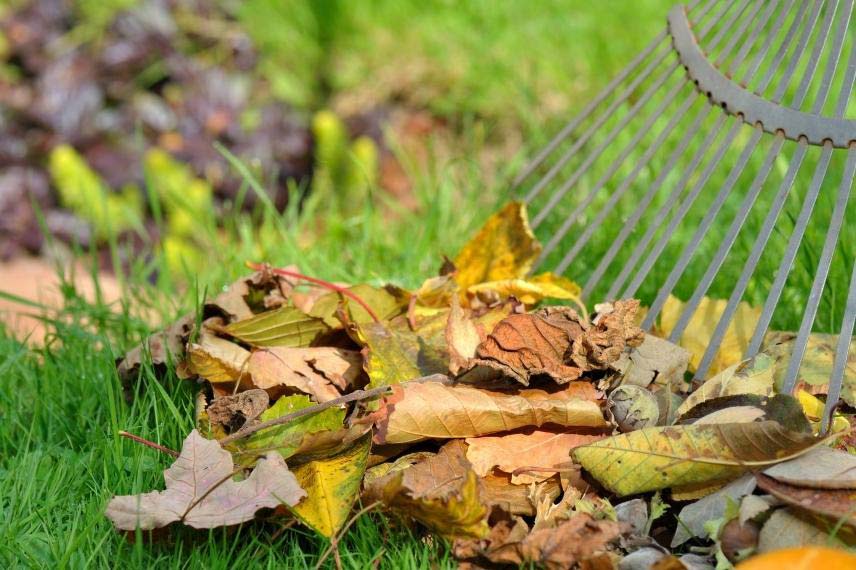
Dead leaves: chore or boon?
The decomposition of leaves
The leaves of some trees are thicker or tougher than others. The leaves of oak, beech, and plane trees, among others, are naturally rich in carbon, with a Carbon/Nitrogen (C/N) ratio between 50 and 60.
In the decomposition of plant material, when this C/N ratio exceeds 20, there is not enough nitrogen to allow for the decomposition of carbon. These leaves then decompose more slowly, and microorganisms must draw nitrogen from the soil as compensation. This phenomenon is known as “nitrogen hunger“. While we would like to add nitrogen to the soil, it is instead being extracted from its reserves. Decomposition is therefore slow and only returns a small amount of mineral nitrogen to the soil.
As nature is well designed, things do rebalance at a certain stage of decomposition, where nitrogen will be redistributed, particularly with the death of decomposing microorganisms and their secretions. This is why some leaves will decompose more slowly than others. It is therefore more complicated to incorporate them into compost, especially since some trees lose a quantity of leaves that can seem astronomical!
No need to panic; one solution could be to use them as mulch, mixed with other leaves that decompose more easily.
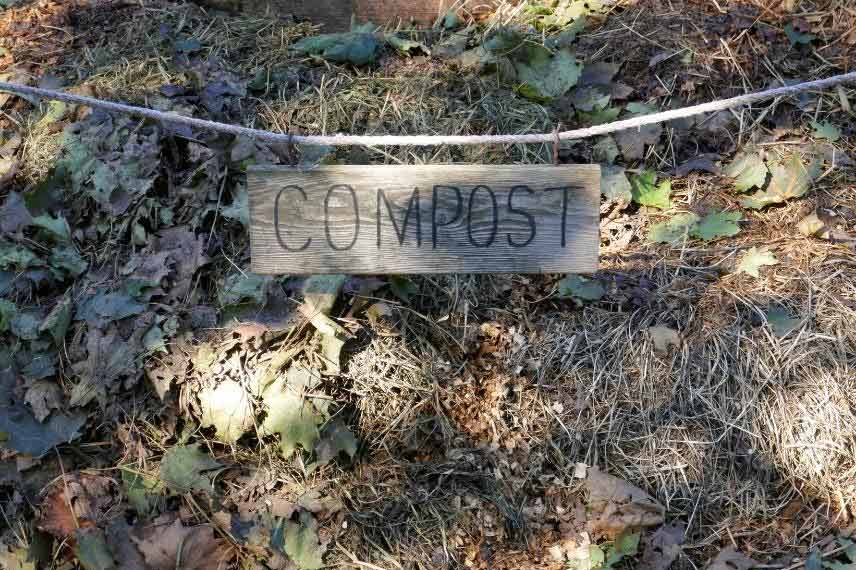 Dead leaves are gold for the garden
Dead leaves are gold for the garden
→ To learn more: “What is nitrogen hunger, how to avoid it, and how to remedy it?”
Read also
How to make good leaf mould? - tutorialThe plane tree
It is a giant over 20 m often planted in cities, where it tolerates pollution very well. The Platanus x acerifolia, or common plane tree, has a deciduous, leathery foliage made up of large, dentate leaves about fifteen centimetres long. The “dwarf” version of the plane tree, more suitable for gardens, is the Ball Plane Tree Platanus acerifolia ‘Alphen’s Globe’, which also bears large, glossy, palmate leaves. In autumn, these countless leaves turn yellow and then brown before falling. They completely cover the ground beneath the tree and decompose very slowly, forcing gardeners into tedious collection sessions. However, while these leaves are tough, they are still compostable but take longer to break down. To shorten their decomposition process, you can shred them and mix them with green waste like grass clippings. Their resistance to decomposition allows them to be used as mulch in flower beds, mixed with other leaves.
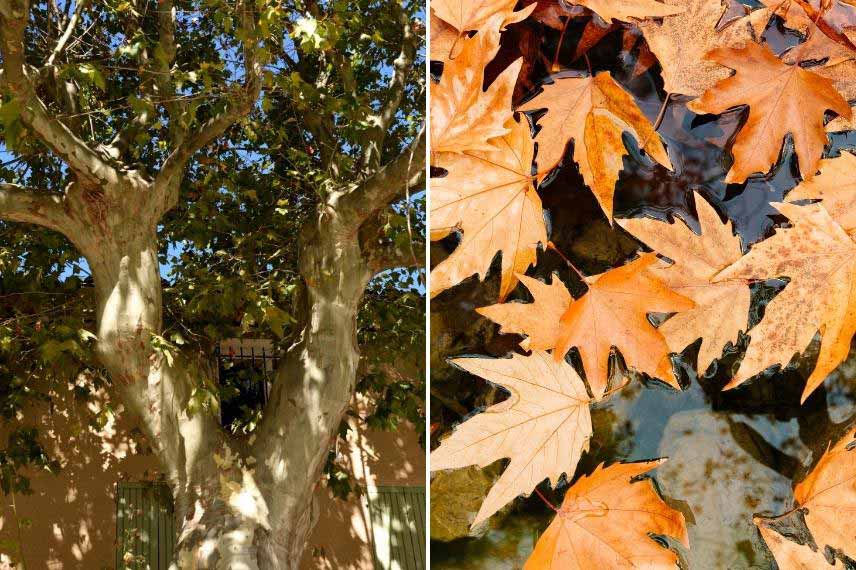 Silhouette and leaves of the plane tree[/caption>
Silhouette and leaves of the plane tree[/caption>
→ Sophie’s advice: plane trees in the southern region are affected by the canker disease caused by a fungus. There is currently no treatment, and this disease causes considerable damage to the alignments of plane trees along roads and the Canal du Midi in France. Large-scale felling campaigns have become necessary, as affected trees become dangerous. If your plane tree shows brown-red bands on the trunk in a flame-like pattern, it may be affected, and a professional diagnosis may be required.
Discover other Trees and large shrubs
View all →Available in 0 sizes
Available in 1 sizes
Available in 1 sizes
Available in 1 sizes
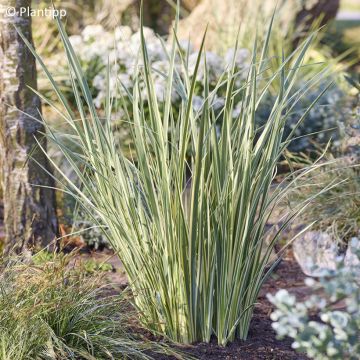
Available in 1 sizes
Available in 1 sizes
Available in 1 sizes
Available in 1 sizes
Available in 2 sizes
Available in 1 sizes
The walnut tree
The walnut or Juglans regia is a deciduous tree that can reach around twenty metres in height, with a spreading foliage that can extend up to fifteen metres. This results in a beautiful foliar surface, composed of dense and leathery leaves. The large ovate leaves are glabrous and measure over twenty centimetres in length. In spring, they are initially bronze in colour, turning to bright, shiny green on the upper side. They then fall en masse in autumn. Walnut leaves are notable for being rich in juglone, a “toxic” compound found in the leaves, roots, and bark of trees in the Juglandaceae family, particularly in the black walnut. Since common walnuts are often grafted onto black walnuts, it is possible that the leaves of your walnut contain a significant amount of juglone. This compound is actually an allelopathic substance, meaning it inhibits the germination and growth of other plants.
Thus, walnut leaves can be considered an ideal mulch. If you are concerned that they may release this anti-germinative compound into the soil, gather them into a pile and let them rest for a few months. Rain will leach and dilute the juglone, allowing you to use this mulch mixed with other leaves at the base of established bushes and perennials.
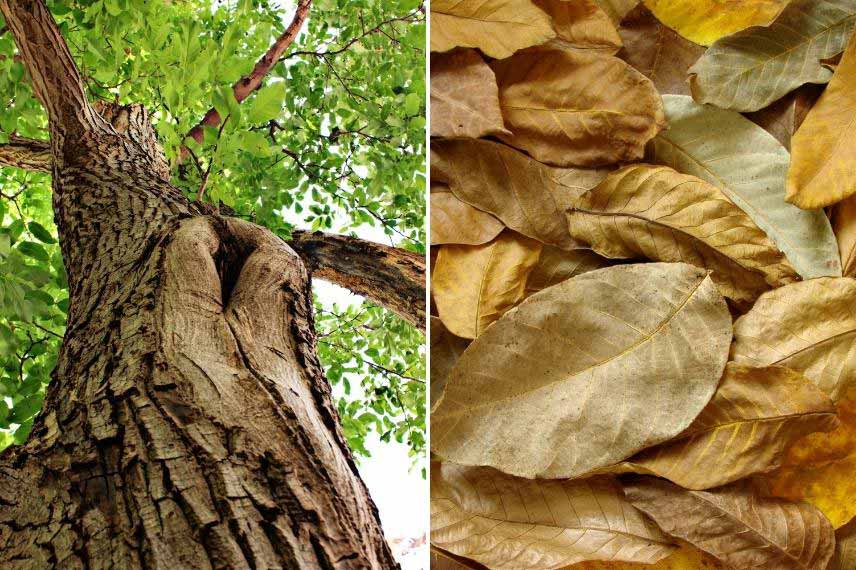 Silhouette and leaves of walnut
Silhouette and leaves of walnut
Read also
How to collect fallen leaves?The sweet chestnut tree
The chestnut tree or Castanea sativa is an imposing deciduous tree, renowned for its nutritious fruits: chestnuts. Its long green leaves, which can measure up to 25 cm in length, form a very dense canopy, ideal for shading large areas. When they fall, thousands of leaves blanket the ground beneath the tree. However, these are rich in tannic acid, which has the unique property of slowing down the decomposition process of the leaves. Several solutions are available to you for smartly utilising the piles of leaves from your chestnut tree: shred them (by running a mower over them if you don’t have a shredder) and use them as mulch in your flower beds. Once shredded, you can also incorporate them into compost by mixing them with other green waste and, if possible, with nettle leaves. Allow this compost to mature for at least a year, and you can then use it in the garden!
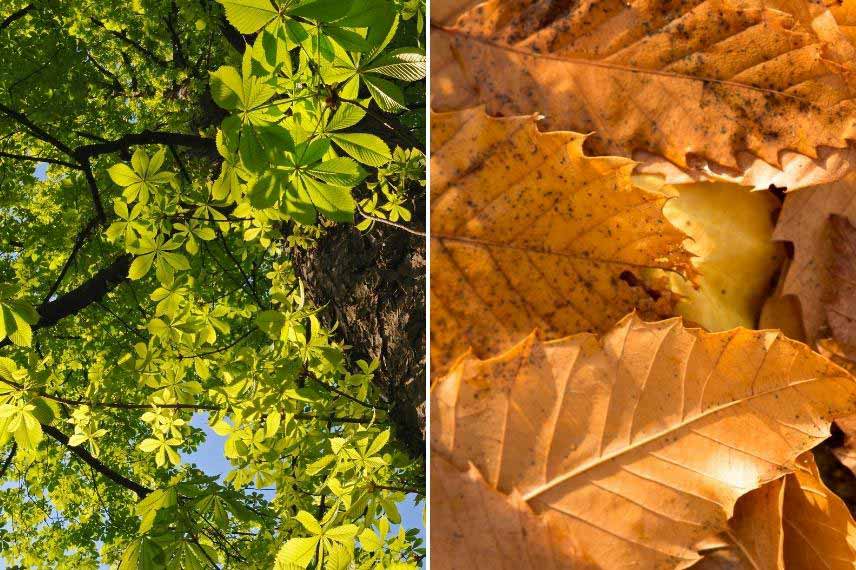
Silhouette and leaves of the chestnut tree
The oak
Depending on the species, oaks can form majestic trees over 30 m tall, with wide and dense branches. Deciduous oaks include:
- the pedunculate oak, Quercus robur
- the pin oak, Quercus palustris
- the scarlet oak, Quercus coccinea ‘Splendens’
- or the red oak, Quercus rubra
Like those of the chestnut tree, oak leaves contain tannic acid. Again, these compounds slow down their decomposition. Contrary to some beliefs, oak leaves are not toxic; one simply needs to avoid eating them… which no one does! Yet, we consume tannic acid ourselves, for example in red wine or tea. What makes it poisonous is the dose, so common sense should prevail, and these tannins should be “diluted” by mixing oak leaves with other leaves and green waste. This mixture will also help reduce the acidity of the resulting compost, as the freshly fallen leaves from these venerable trees are slightly more acidic than others.
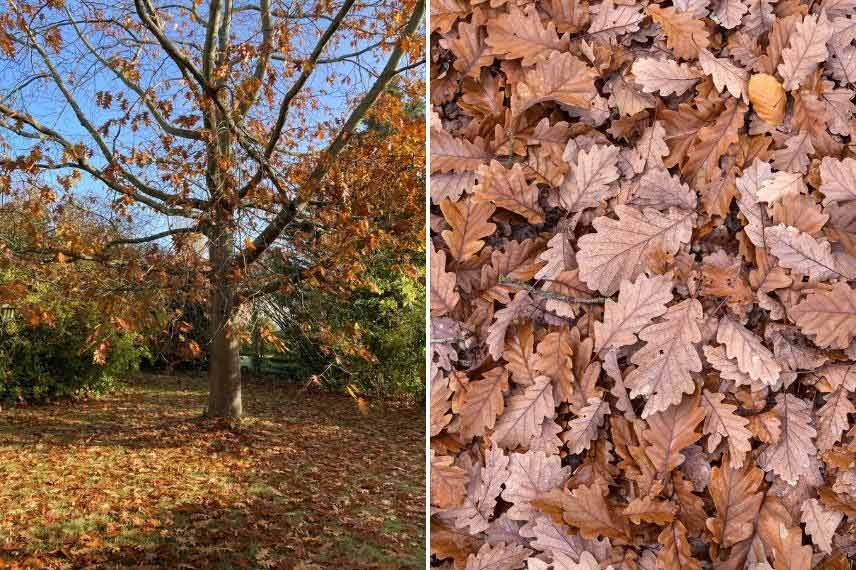 Silhouette and oak leaves (Photo Gwenaëlle David)
Silhouette and oak leaves (Photo Gwenaëlle David)
If you wish to use the tough oak leaves as mulch, it is advisable to shred them beforehand, using a mower or strimmer, to promote their decomposition and the leaching of tannins and acidity under the action of rain.
Beech
Beeches are deciduous or marcescent trees well known to gardeners and forest walkers! Whether it’s the Common Beech Fagus sylvatica, the Purple Beech Fagus sylvatica ‘Atropurpurea’, or the Golden Fastigiate Beech Fagus sylvatica ‘Dawyck Gold’, they are recognisable by their ovate leaves fringed with small hairs, measuring 7 to 10 cm long and 5 to 8 cm wide. Quite thick, these leaves remain partially on the trees during winter (hence the term “marcescent”). This is a shade-loving species: in a beech forest, young plants fear sunlight more than anything and benefit from the shade of their dense foliage. Beech trees therefore produce a large quantity of leaves due to this dense branching, and these decompose slowly. Take advantage of this bounty: it’s excellent free mulch to spread at the base of trees, hedges, or in beds of shrubs and perennials! This will help soil life to thrive and initiate a virtuous cycle to enrich it.
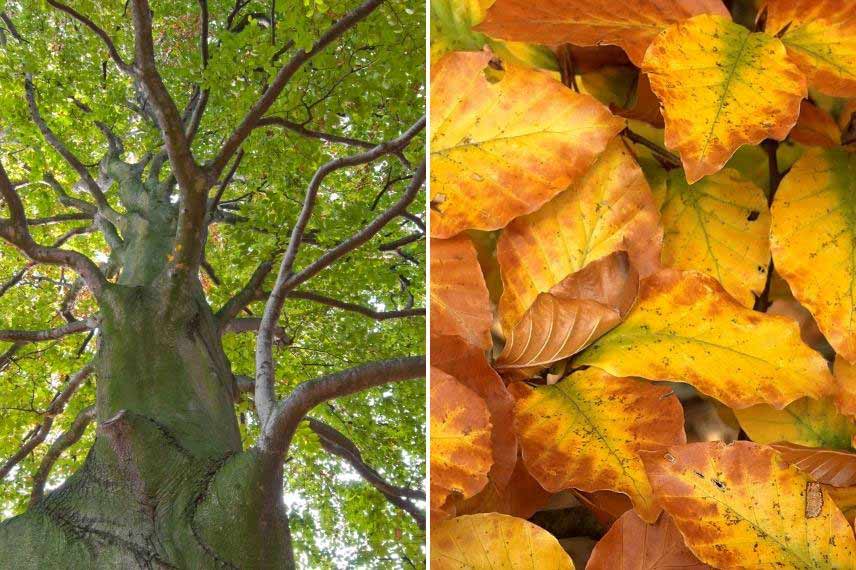 Silhouette and leaves of beech
Silhouette and leaves of beech
Magnolia
The genus of magnolias includes over a hundred species, primarily trees and large bushes. The leaves of magnolias are generally large, ovate, and leathery. Depending on the species, they can be either deciduous or evergreen. Their large solitary flowers are very decorative, making magnolias highly valued by gardeners. Things become a bit tricky when autumn arrives and countless leaves fall onto the lawn where magnolias are often planted solitarily: one must hurry to collect them, and many people take them in whole bags to the tip. The best use of these fallen leaves in the garden is to create a mulch, useful for protecting your most tender plants from the cold. Try to shred them as much as possible to achieve a homogeneous mulch and spread them in a thick layer, creating a true insulating blanket!
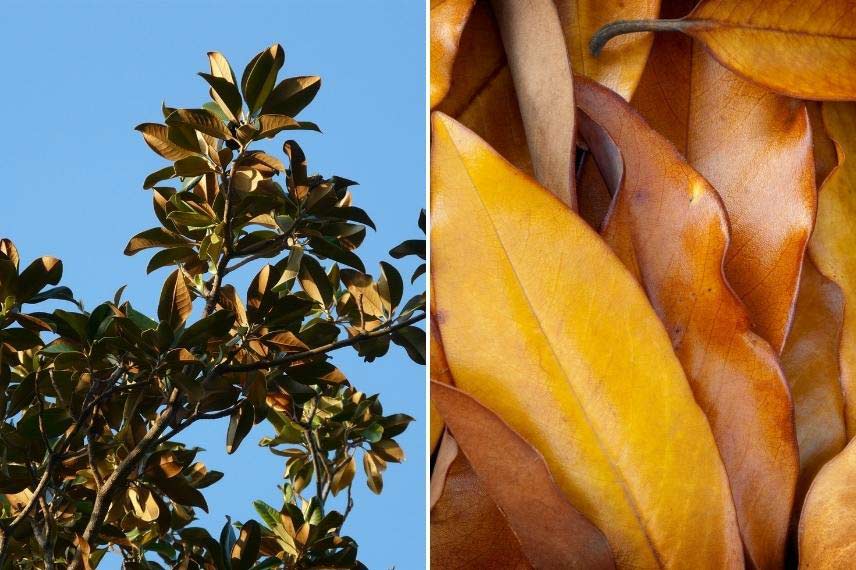 Silhouette and leaves of magnolia
Silhouette and leaves of magnolia
The plane tree mulberry
The plane tree mulberry or Morus kagayamae is a deciduous shade tree, identifiable by its large, lobed, glossy leaves. Reaching around ten metres in height, it spreads its crown over a wide area, quickly producing a multitude of leathery leaves: ideal for protection from the scorching sun in summer, but a challenge when it comes to collecting them in autumn! If you face this issue, you will know that incorporating them directly into compost is not the best solution, as their decomposition is slow. You will need to gather them into a pile and break them down into the smallest possible pieces: they will then provide a significant contribution to the compost, and you can spread them as mulch along with the shredded branches and other finer leaves.
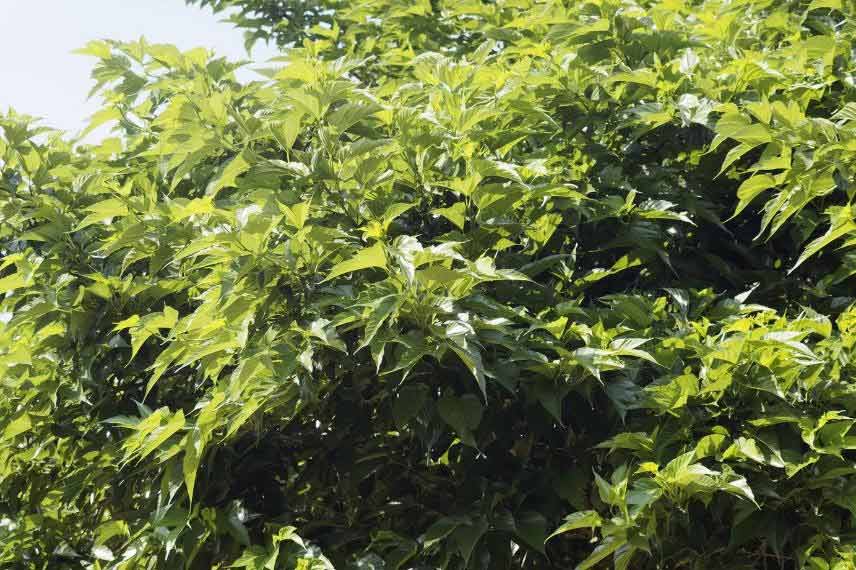
Branches of plane tree mulberry
- Subscribe!
- Contents

































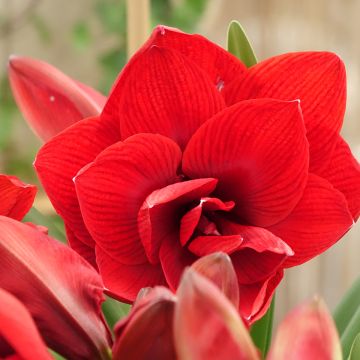


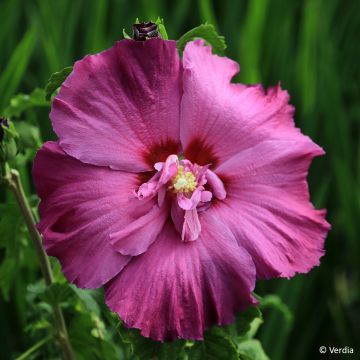

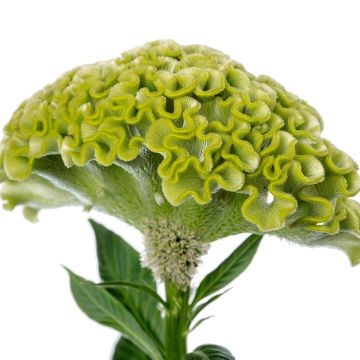
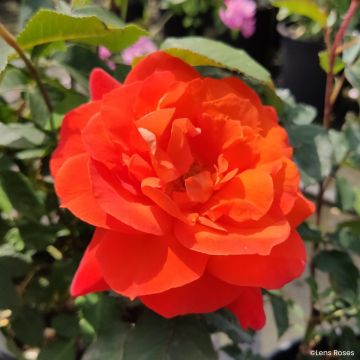

Comments